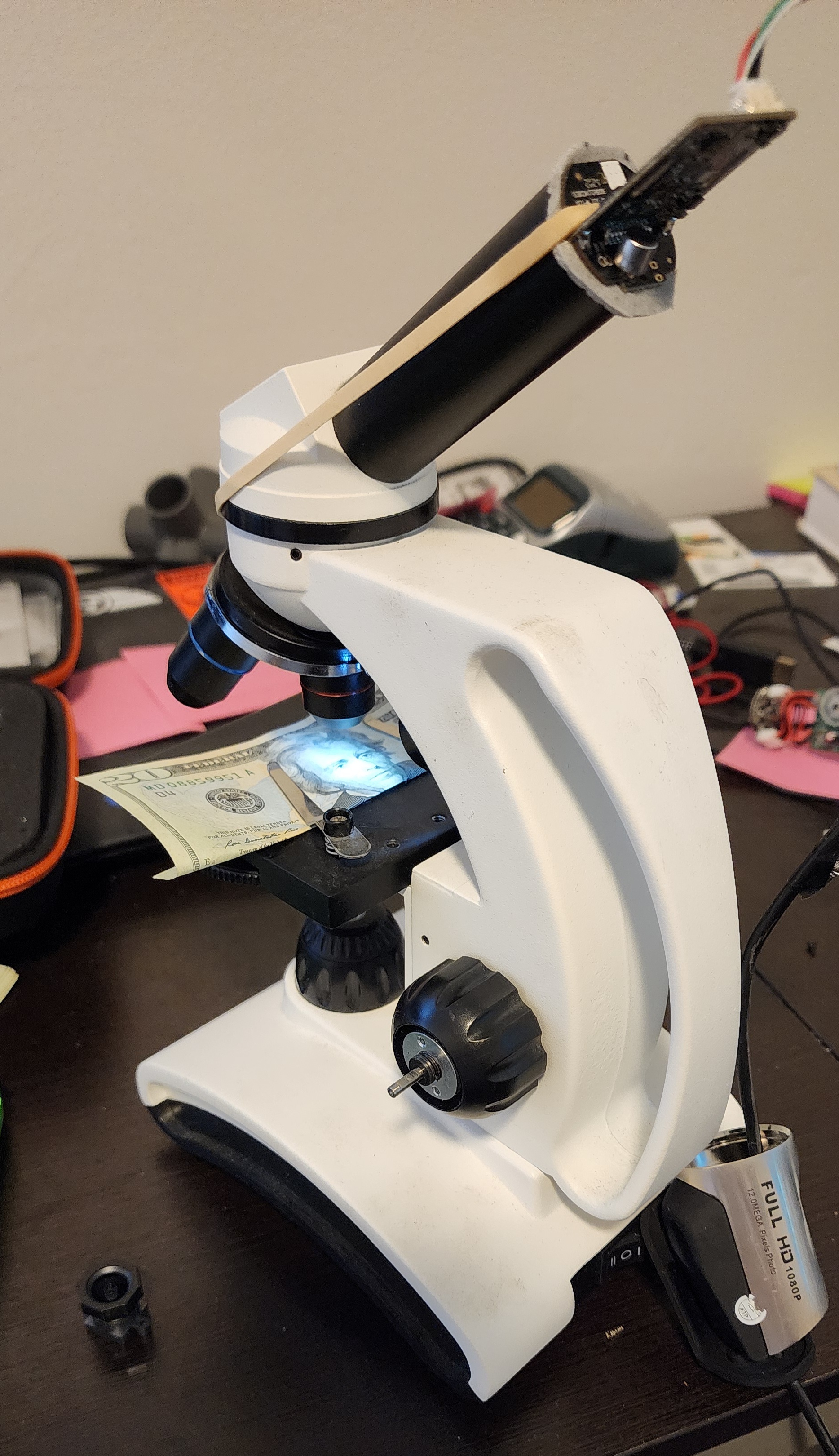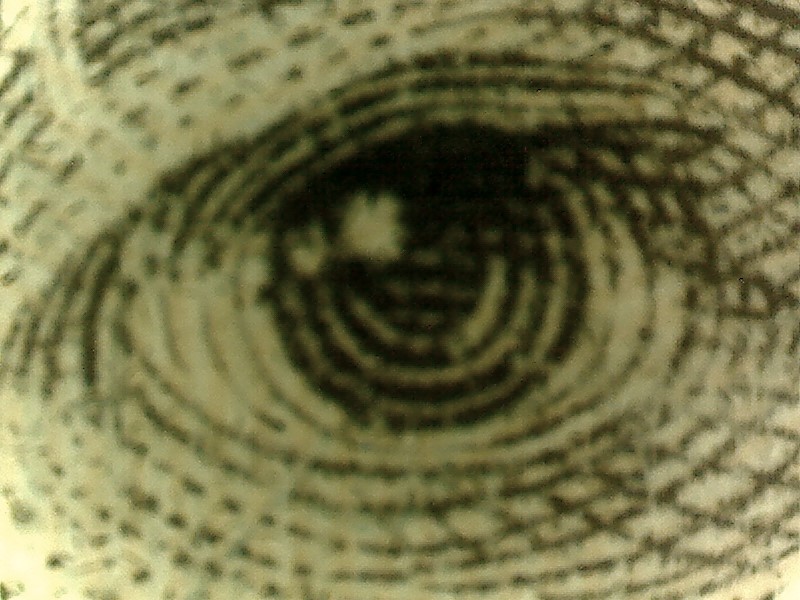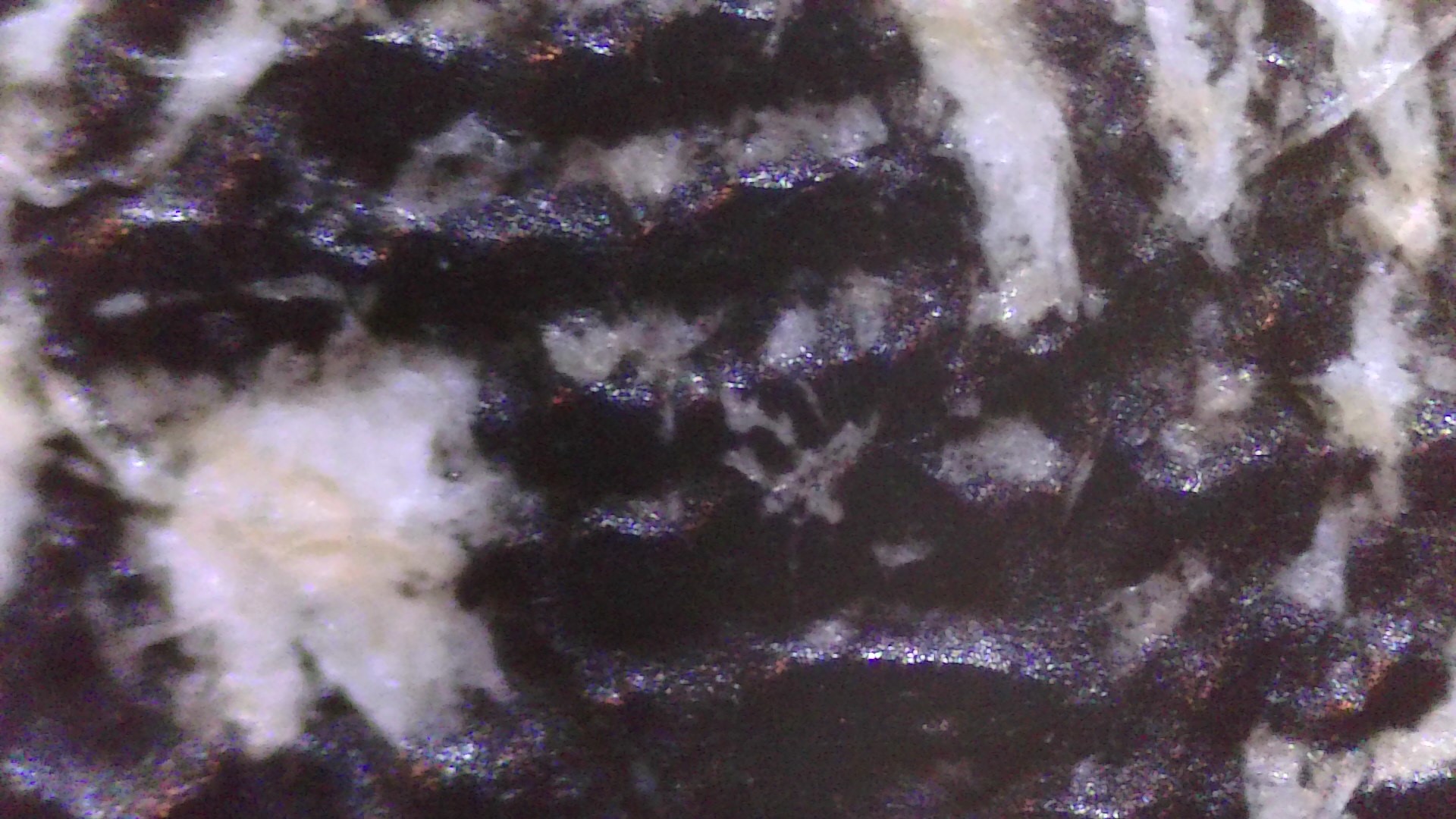I stopped by a hamfest several months ago to pick through the flee market. One man sold me an old USB microscope for $2. At another stand, I had the good fortune of finding a proper lab compound microscope. Sadly, it was missing an eyepiece. On trying out the USB microscope at home, I noted a series of speckles all over the image. I tried every kind of dust removal on the lens, but it didn't help. I ended up pulling it apart and found that the optical sensor's plastic filter surface had started to liquefy with age. I had also noted an uncomfortable stickiness with all the other clear plastic parts, so I decided to trash the whole thing rather than try to remove a melted filter from the sensor without damaging the underlying silicon. I turned my attention to the compound microscope. Despite lacking an eyepiece, I was briefly entertained by placing my eye at just the right distance from the opening. The plastic coarse adjustment knob of the microscope was a bit sticky with age, but it was mild enough that it was worth scrubbing it down until it lost its tackiness. I dug out an old disassembled webcam from my junk bin, removed its lens, and placed it in prime focus on the opening of the scope. Avoiding making any permanent adjustments to the optical chain, I simply rubber-banded the PCB against the opening of the tube, preventing metal-to-metal contact by cutting out a foam ring from a thin sheet of drawer liner. The view with the lowest magnification objective was unable to focus without colliding with the stage. More magnified stages also experienced significant vignetting versus what I could observe looking down the tube with my bare eye. This was because of the distance of the sensor from the nearest lens/mirror, which resulted in much of the light landing outside the bounds of the sensor. I likely could have resolved this if I had some longer tube to attach to the existing eyepiece tubing without introducing stray light, but it was a short tinker session. I took a few example photos of Jackson's Eye on a $20 bill.
When I next mess with the lab microscope, I'd like to make an adjustable fixture for the webcam's sensor board. It might be a good idea to surround whatever I make (presumably some kind of telescoping mechanism) with black rubber or cloth to keep out light and dust. If I want to play with motors, I could couple a stepper motor to the stage adjustment knob so that I can allow a computer to control the focus. Figuring out a small motorized x-y stage for samples would also be extremely interesting, but would probably be the most involved/expensive mod I could reasonably build onto this without it being smarter to just seek out a more modular model.



